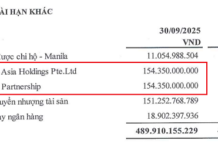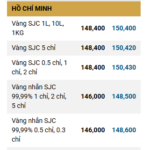 |
A Delicate Balance: Navigating Vietnam’s Corporate Bond Market
The Hanoi Stock Exchange’s private bond trading system has seen impressive growth in its first year, recording 1,146 bond codes from 301 issuers with a transaction value of approximately VND 830 trillion. However, only 50% of issuing organizations have traded, and just 38% of bond codes have been transacted.
Additionally, 70% of the total number of traded bond codes lack sufficient information for pricing or fail to meet standards. This leaves only a small fraction, slightly over 10%, of registered bonds that can be considered “up to par.”
However, a more pressing concern for the corporate bond market is the issuers’ ability to make timely payments. According to VIS Rating, a significant portion of corporate bonds maturing within the next 12 months fall into the high-risk category, with a likelihood of delayed principal and interest payments. In August 2024 alone, an estimated VND 7.3 trillion out of VND 18.3 trillion worth of corporate bonds are at risk of default. Of the total VND 259 trillion in maturing corporate bonds, about 20% carry a high risk of delayed payment, and 90% of these issuers have previously defaulted on interest payments at least once.
The struggling businesses primarily belong to the real estate, energy, and construction sectors. Their chances of recovery are slim due to the ongoing stagnation in the real estate market, coupled with high leverage and low cash reserves.
An Elephant in the Room
While there are concerns about the potential default of private bond issuers, their efforts to extend maturities or repay debts through asset swaps indicate that lenders are keen to avoid a worst-case scenario. Why is this the case?
The answer lies in the fact that 70% of private bond investors are domestic credit institutions and securities companies. Should an issuer default, these financial institutions would have to recognize significant losses. If the losses are substantial, the stability of the entire financial system could be at risk, as it would directly impact their assets and capital.
|
The risk of holding corporate bonds by credit institutions is significant, but it has not received the attention it deserves, much like the proverbial elephant in the room. |
The accumulation of risk is further exacerbated by the fact that 80% of bond-issuing companies over the past year are listed entities. More often than not, the collateral provided by these companies is in the form of their own shares or future real estate developments. Should these companies encounter difficulties, the market value of their shares could decline, leading to a decrease in the value of the collateral. In the event of a forced sale of the collateral, systemic risk would increase.
Typically, the corporate bond market attracts investors such as life insurance companies, pension funds, and investment funds. However, in Vietnam’s private corporate bond market, this group accounts for less than 1% due to the predominantly short-term nature and high risk of these bonds. This points to the speculative and short-term nature of corporate bonds in Vietnam, especially given the rudimentary bond rating system in place.
The Future of Vietnam’s Corporate Bond Market
Despite the ongoing challenges and risks associated with the older corporate bonds in the real estate and renewable energy sectors, a new wave of issuers from diverse industries, such as infrastructure and utilities, along with guarantors, is bringing a breath of fresh air to the market. Their participation contributes to improving market quality, stability, and sustainability.
To achieve the goal of expanding the corporate bond market to 30% of GDP by 2030, experts have offered valuable insights. These include enhancing market transparency, diversifying and improving the quality of issuers and bonds, attracting professional domestic and international investors, and refining the legal framework with a priority on investor protection, especially for individual investors.
However, there are immediate priorities to address the market’s lingering issues and prevent potential risks from destabilizing the financial system.
Firstly, it is crucial to identify the high-risk corporate bond investments of financial institutions as “bad debts” that require urgent resolution. Ensuring adequate loss provisioning and maintaining bank capital safety are essential considerations.
Secondly, closely monitoring the concentration of corporate bond holdings by financial institutions is vital to prevent excessive exposure. Imposing a maximum limit on corporate bond investments for banks could encourage a more diverse investor base.
The risks associated with holding corporate bonds by credit institutions are significant, but they have not received the attention they warrant, much like an elephant in the room. For sustainable development, a strong foundation and proactive risk management are imperative. While the shortcomings in the corporate bond market will take time to rectify, it is hoped that the process will not be protracted, unlike the ongoing unresolved issues with weak banks.
Dr. Vo Dinh Tri
Minister of Finance: ‘Corporate bond market could reach 2.5 quadrillion’
Mr. Ho Duc Phoc evaluates corporate bonds as a good capital mobilization channel, with a development potential of up to VND 1.5 trillion.






































